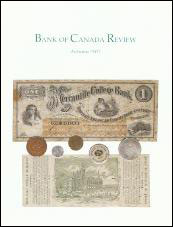November 21, 2002
Is Canada Dollarized?
The sharp depreciation of the Canadian dollar and the successful launch of the euro have sparked a lively debate in Canada about the possible benefits of formally adopting the U.S. dollar as our national currency. Some observers have suggested that this debate is largely irrelevant, since Canada is already highly "dollarized." Canadian businesses and households, they assert, often use the U.S. dollar to perform standard money functions in preference to their own currency. Very little evidence has been provided, however, to support these claims.
The authors review the available data with a view to drawing some tentative conclusions about the extent to which Canada has already been informally dollarized. The evidence suggests that many of the concerns that have been expressed about the imminent demise of the Canadian dollar have been misplaced. The Canadian dollar continues to be used as the principal unit of account, medium of exchange, and store of value within our borders. Moreover, there is no indication that dollarization is likely to take hold in the foreseeable future. Indeed, in many respects, the Canadian economy is less dollarized now than it was 20 years ago.
